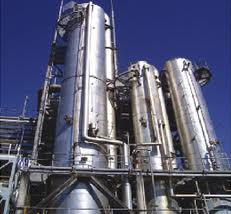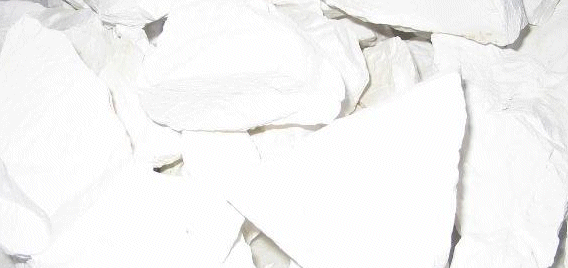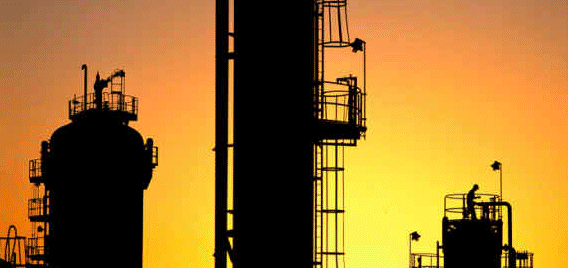Latest Downloads
-
 Water Bath Indirect Heaters
Water Bath Indirect HeatersArt Montemayor - Oct 12 2018 02:35 PM
-
 Petroleum: A Primer for Kansas
Petroleum: A Primer for KansasArt Montemayor - Oct 12 2018 02:27 PM
-
 Spray Tower for Flue Gas Scrubbing Design
Spray Tower for Flue Gas Scrubbing Designankur2061 - May 02 2018 02:31 PM
-
 Selection of Vertical Tanks
Selection of Vertical Tanksankur2061 - Apr 19 2018 07:42 AM
-
 Pressure Drop Calculator for Strainers 1
Pressure Drop Calculator for Strainers 1ankur2061 - Mar 24 2017 02:04 PM
-
 Horizontal Pig Trap System Design Guidelines
Horizontal Pig Trap System Design Guidelinesankur2061 - Jan 14 2017 02:54 PM
-
 Performance Prediction of 3-Stage Propane Refrigeration System
Performance Prediction of 3-Stage Propane Refrigeration Systemankur2061 - Aug 08 2016 02:43 PM
-
 Centrifugal Pump Troubleshooting Checklist
Centrifugal Pump Troubleshooting Checklistankur2061 - Dec 17 2015 08:18 AM
-
 Compressor Troubleshooting Checklist
Compressor Troubleshooting Checklistankur2061 - Sep 08 2015 11:43 AM
-
 Amine Sweetening Unit Preliminary Design
Amine Sweetening Unit Preliminary Designankur2061 - May 19 2015 09:35 AM
Popular Store Titles
 Tank Jacket Calculator
Tank Jacket Calculator
 Specification Sheet Collection
Specification Sheet Collection
 PIPESIZE
PIPESIZE
 Relief Valve Sizing
Relief Valve Sizing
 Rupture Disc Sizing
Rupture Disc Sizing
Chemical and Process Engineering Resources
Articles


Product Viscosity Versus Shear
Many products are known to be “shear thinning,” which is a term given to materials that exhibit a decrease in viscosity when force is exerted. The viscosity of pseudoplastic fluids decreases with shear, and recovers quickly when the shear is removed. Examples include paper pulp in water, latex paint, molasses, and pharmaceutical suspensions (such as certain cough syrups).
Read story → 6 comments





Centrifugal Pumps: Understanding Cavitation
Operating a pump under the condition of cavitation for even a short period of time can have damaging consequences for both the equipment and the process. Operating a pump at low flow conditions for an extended duration may also have damaging consequenc...
Read story → 12 comments






Valve Sizing and Selection
Sizing flow valves is a science with many rules of thumb that few people agree on. In this article I'll try to define a more standard procedure for sizing a valve as well as helping to select the appropriate type of valve. **Please note that the corr...
Read story → 16 comments






Falling Film Evaporators in the Food Industry
That orange juice that you had this morning sure tasted good didn't it? Did you ever wonder how they get it concentrated into that little can? Chances are the manufacturers used a falling film evaporator. Falling film evaporators are especially p...
Read story → 4 comments






Basics of Polystyrene Production
Polystyrene is a widely used polymer. After production of the monomer, from one of a few processes, the monomer proceeds to further processing to form polystyrene. Styrene Monomer ProductionThe energy needed for the reaction is supplied by superheate...
Read story → 3 comments






Flow Through Orifice Plates in Compressible Flu...
The calculation of compressible flow through orifice plates at high dP (critical flow) appears to be carried out incorrectly in most instances. This flow condition is often encountered on gas plants, compressor stations and pipelines where orifice plat...
Read story → 0 comments






Heat Exchanger Effectiveness
Calculating heat exchanger effectiveness allows engineers to predict how a given heat exchanger will perform a new job. Essentially, it helps engineers predict the stream outlet temperatures without a trial-and-error solution that would otherwise be ne...
Read story → 0 comments






Extractive Distillation: An In-Depth Look
Distillation is the most widely used separation technique in the chemical and petroleum industry. However, not all liquid mixture are amenable to ordinary fractional distillation. When the components of the system have low relative volatilities (1.00...
Read story → 3 comments






Plate Heat Exchangers: Preliminary Design
Numerous articles have been published regarding the advantages of compact heat exchangers. Briefly, their higher heat transfer coefficients, compact size, ease of service, cost effectiveness, and their unique ability to handle fouling fluids make compa...
Read story → 5 comments






Statistical Process Control: Process and Qualit...
Statistical Process Control (SPC) provides a way to monitor chemical and other processes. We'll focus on continuous chemical processes and how the process and quality control departments utilize SPC. Process control engineers use SPC to monitor a process's stability, consistency and overall performance. Quality control engineers use SPC to see if the process is functioning within quality standards. In industry, these two departments work together to monitor a chemical process.
Read story → 3 comments






Water Chemistry and Treatment
Water is a natural solvent. Rain water is acidic due to carbon dioxide picked up in the atmosphere. Water and CO2 make carbonic acid (acid rain). Water hardness is primarily calcium and magnesium. Calcium is limestone - common throughout Midwest. Acid water dissolves limestone, iron, and other minerals in soil.
Read story → 3 comments






Estimating Heat Capacities for Solutions with D...
Often times it is necessary to find the heat capacity for solutions with dissolved solids. A quick estimation method was proposed by Dimoplon in 1972. The proposed expression is:Cp(soln) = W1 Cp(solid) + W2 Cp(water)Eq. (1)where:Cp(soln) = Heat capacit...
Read story → 1 comments






Why Become a Chemical Engineer?
How about a career where the opportunities are endless? Trying not to sound like an advertisement, I'd like to describe some of the more common careers pursued with a Chemical Engineering degree. Firstly, if you're considering studying Chemical Engineering, but you're a little timid because of the horror stories that you hear, you actually may want to think about it some more!
Read story → 3 comments






Tank Blanketing Basics Covered
Tank blanketing, or padding, refers to applying a cover of gas over the surface of a stores commodity; usually a liquid. Its purpose is either to protect or contain the stored product or prevent it from harming personnel, equipment, or the environment....
Read story → 2 comments






Understanding Compressible Flow
Understanding the flow of compressible fluids in pipes is necessary for a robust design of process plants. The main difference between incompressible fluid, like water, and compressible fluid, vapor, is the greater change in pressure and density. This...
Read story → 0 comments






Steam Tracing with MS Excel
Heat tracing is used to prevent heat loss from process fluids being transported in process fluid pipes, when there is risk of damage to piping, or interference with operation such as fouling or blockage, caused by the congealing, increase in viscosity, or separation of components, in the fluid below certain temperatures, or when there is risk of formation of corrosive substances or water due to condensation in corrosive services.
Read story → 3 comments





Pinch Technology: Basics for Beginners
While oil prices continue to climb, energy conservation remains the prime concern for many process industries. The challenge every process engineer is faced with is to seek answers to questions related to their process energy patterns. A few of the fre...
Read story → 0 comments






Factors Affecting the Quality of Quicklime
Archived article in PDF format This is a legacy article shown in Adobe Acrobat format embedded into the page below. If you cannot see the article below, please download Acrobat Reader.
Read story → 0 comments






Centrifugal Pumps: Basic Concepts of Operation,...
The operating manual of any centrifugal pump often starts with a general statement, "Your centrifugal pump will give you completely trouble free and satisfactory service only on the condition that it is installed and operated with due care and is prope...
Read story → 17 comments






Using Equivalent Lengths of Valves and Fittings
One of the most basic calculations performed by any process engineer, whether in design or in the plant, is line sizing and pipeline pressure loss. Typically known are the flow rate, temperature and corresponding viscosity and specific gravity of the f...
Read story → 3 comments






Deaerators for Boilers
Removing dissolved oxygen from boiler feed water is absolutely necessary to protect your boiler equipment from severe corrosion. But the make-up water necessary in any boiler system inevitably contains dissolved oxygen. Oxygen can sometimes enter condensate systems as well. A good deaerator is essential to trouble-free boiler operation.
Read story → 1 comments






Hollow Fiber Membranes
Membrane separation processes has become one of the emerging technology which undergo a rapid growth during the past few decades. It has drawn the world attention especially in the separation technology field, one of the chemical engineers' specialty w...
Read story → 1 comments






Fume Control and Scrubbing on Hydrochloric Acid...
New standards for hydrochloric acid emissions are expected to be proposed by the EPA soon, and these will affect the design of scrubbers for pickle line fume exhaust systems. This paper discusses hydrochloric acid fume scrubbing, with particular refere...
Read story → 0 comments






Ammonia: The Next Step
Steam reforming of hydrocarbons for ammonia production was introduced in 1930. Since then, the technology has experienced revolutionary changes in its energy consumption patterns. Ranging from an early level of 20 Gcal/tonne (79.4 MBtu/tonne) to about...
Read story → 0 comments






Making Decisions with Insulation
Many people overlook the importance of insulation in the chemical industry. Some estimates have predicted that insulation in U.S. industry alone saves approximately 200 million barrels of oil every year.
While placing insulation onto a pipe is f...
Read story → 2 comments






Specifying A Liquid-Liquid Heat Exchanger
As an engineer, specifying heat exchangers for procurement is an important step in the successful execution of any heat transfer or energy conservation project. Early recognition that there are many different heat transfer technologies available can he...
Read story → 1 comments






Experienced Based Rules of Chemical Engineering
Experience is typically what turns a good engineer into a great engineer. An engineer that can look at a pipe and a flowmeter and guess the pressure drop within 5%. Someone who can at least estimate the size of a vessel without doing any calculations....
Read story → 13 comments






A Students Guide to Refining
Distillation is the first step in the processing of crude oil and it takes place in a tall steel tower called a fractionation column. The inside of the column is divided at intervals by horizontal trays. The column is kept very hot at the bottom (the c...
Read story → 7 comments






Correlations for Convective Heat Transfer
In many cases it's convenient to have simple equations for estimation of heat transfer coefficients. Below is a collection of recommended correlations for single-phase convective flow in different geometries as well as a few equations for heat transfer...
Read story → 0 comments






U in Heat Exchangers
Typical values of U are useful for quickly estimating the required surface area. The literature has many tabulations of such typical coefficients for commercial heat transfer services.
Read story → 0 comments






 FB
FB